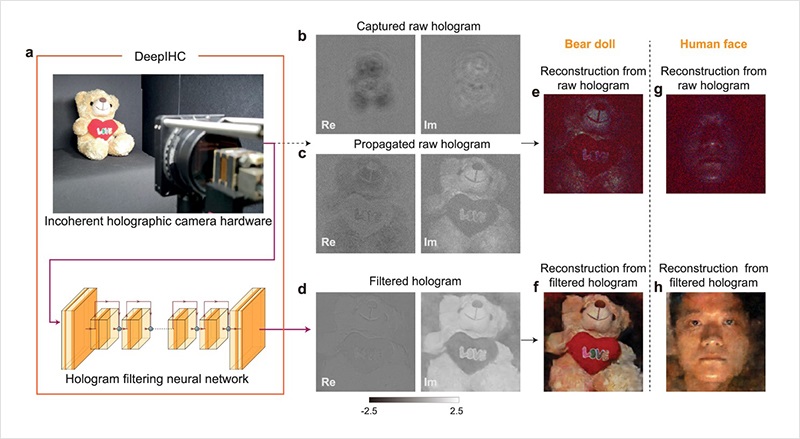2023-09-19
Professor Sung-Wook Min's research team at the Department of Information Display developed the world's first holographic streaming system using deep learning technology. The system utilizes natural light holographic camera technology that can capture holograms without special lighting such as lasers. The captured 3D holographic data is then fed into a deep learning-based algorithm to remove noise and improve the image in real-time
Professor Sung-Wook Min's research team at the Department of Information Display implemented the world's first holographic streaming system using deep learning technology. The related research results were published in Volume 14 of Nature Communication (IF: 17.694) under the title, “Deep learning-based incoherent holographic camera enabling acquisition of real-world holograms for holographic streaming system.”
Conventional holographic images are usually obtained through an interference pattern created using a coherent light source such as a laser. Since lasers have potential safety issues, it is difficult to create 3D holographic images of living creatures or especially human faces in real-world situations. To overcome this problem, the research team used incoherent holographic cameras to capture images under natural light without safety issues and then digitally enhanced the captured holographic image in real-time using special neural network based on deep learning. This resulted in the development of a “holographic streaming system” that can display in real-time photorealistic 3D holograms obtained under natural light.
Presenting a plan to materialize holography, the next-generation 3D imaging technology
The natural light-based holographic camera used by the research team has a simple structure, a wide field of view, and is capable of shooting video. Wavefront interference and phase shift were performed simultaneously using a liquid crystal-based geometric phase lens. However, the holographic images in raw data captured from this setup required sophisticated real-time digital processing to sufficiently raise the image quality to be used in a 3D holographic image streaming system.
Deep learning algorithms have become a popular tool to overcome these shortcomings by improving noise caused by optical instability of the camera in real-time. The enhanced image outcome is then seamlessly fed into a full-color holographic display system, making real-time hologram streaming possible.
The research team is proposing a way to materialize holography, the next-generation 3D imaging technology. It contains the original technology for generating and reproducing real-time high-definition hologram data. This is expected to become a 'Holographic Reality' implementation technology based on a real-time transmission platform that transmits spatial optical information beyond 'Virtual/Augmented Reality' beyond simple 3D video shooting and playback technology.
Paper:
https://www.nature.com/articles/s41467-023-39329-0
For further insights
- Explore Professor Min Sung-Wook's research profile













